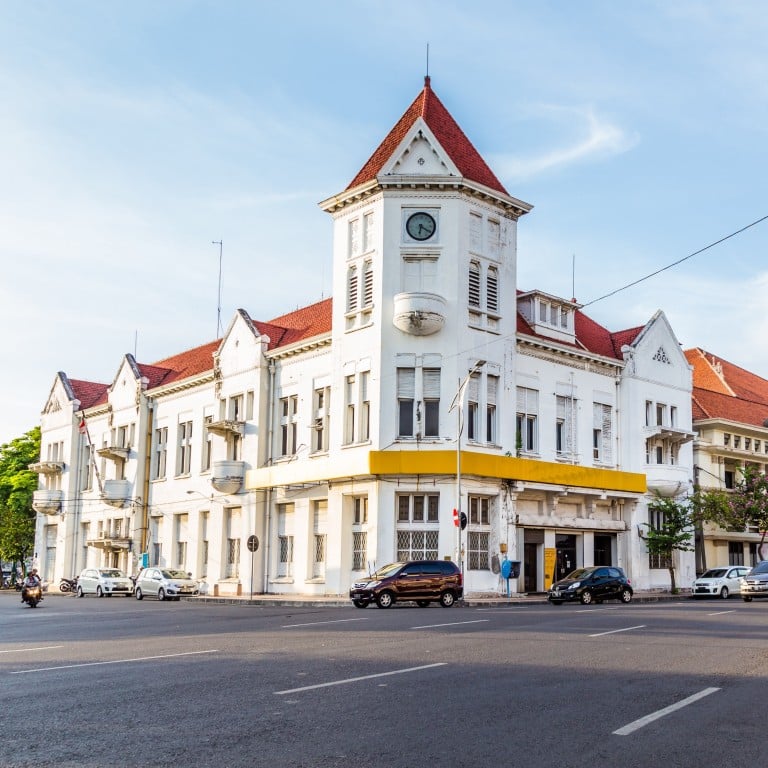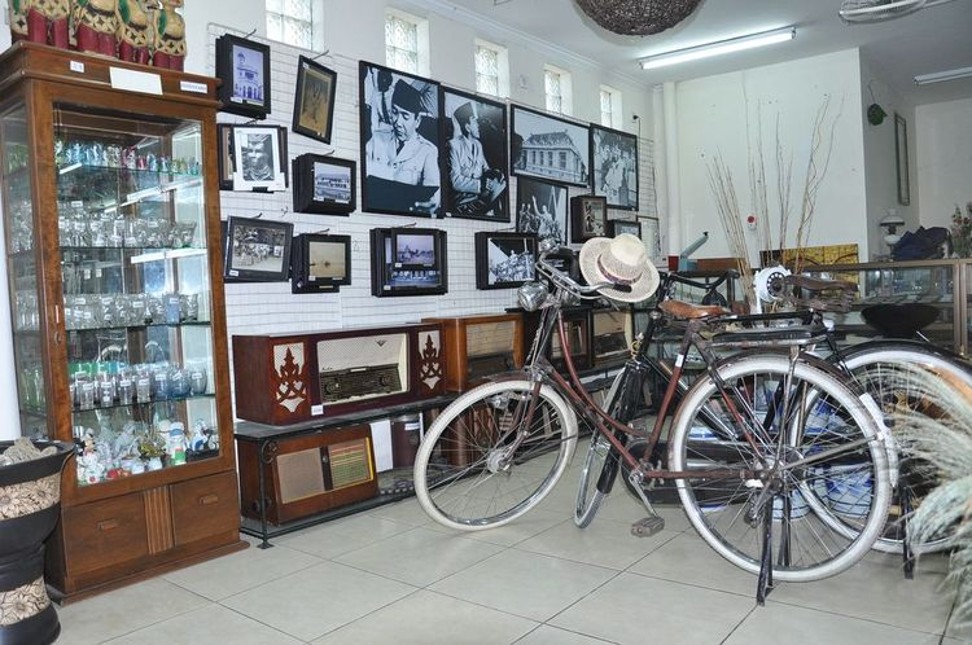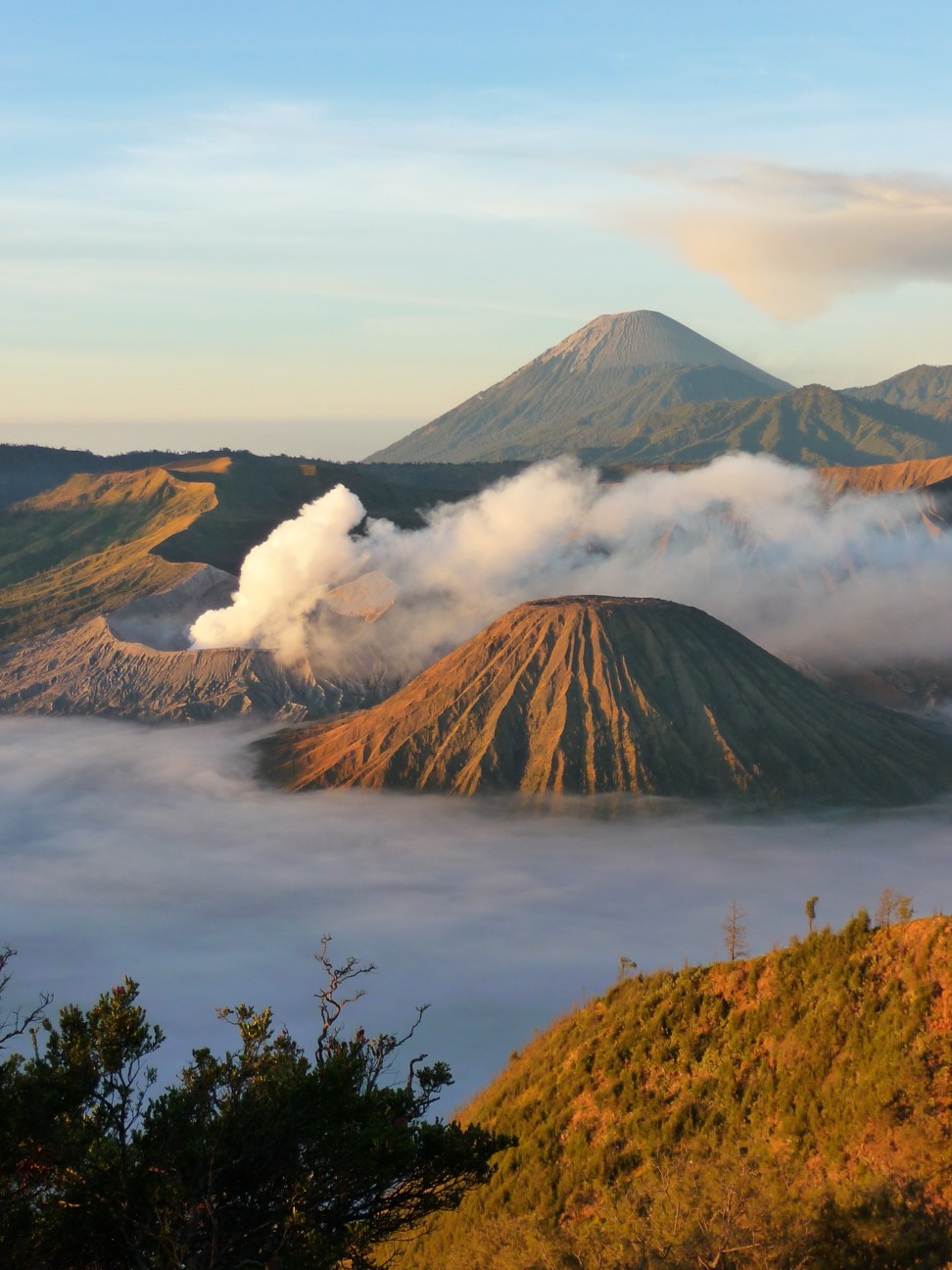
A weekend break in Surabaya – Indonesia’s second city has first place promise
- The City of Heroes is a thriving port with a vibrant past and an encouraging future
- Weekenders can eat their way around Surabaya’s beef-heavy signature dishes or shop for antique teak
Smack on the Indonesian island of Java’s northeast coast, Surabaya has sometimes been called “second-city, second-rate”, although that might be being a bit generous to the capital. In truth, the City of Heroes does a lot of things better than anywhere else in Indonesia. It’s a thriving port, with not just dreary old containers but pukka Conradian wharfs whose stevedores lug cargo on and off sailing ships that still ply the archipelago. The Dutch left some gorgeous art deco buildings, nowhere will you find more fanatical football fans, and Surabaya’s plethora of public parks and fountains and general eco-ness saw it receive a special mention in the Lee Kuan Yew World City Prize last year.
Since 2016, the metropolis has hosted the Surabaya Cross Culture International Folk and Art Festival, running from July 21 to 25 with the sort of programme that title might lead you to expect. Got a prior engagement? No worries, Surabaya’s fun all the other months of the year, too.
Where to stay
With rates running at US$80 or so per night (including a joust at the breakfast buffet), this is a supremely sexy heritage bargain.
What to buy

Happy the HNW individual who sets out in search of what are sometimes called therapeutic retail experiences: and with US$70 clocking in at a million rupiah, Surabaya shopping should be non-stop merriment.
Trawl the city’s street markets, ping-pong around the vast caverns that make up mall Tunjungan Plaza (200-plus tenants spread over 175,000 square metres in the central business district) – sooner or later everyone ends up at Mirota Batik & Handicraft, which, besides the blindingly obvious, also stocks some rather decent (and shippable) teak furniture, antiques, old coins (hint: if they really are old, they will be weighty, too) and more regular souvenirs. Fail to haggle here, or just about anywhere else in town, and you’re marked down as soft in the head.
Surabaya is one of the country’s top spots for shoes, as its factories manufacture them by the zillion. Seconds and overruns make sporadic appearances in the markets, though smaller sizes predominate.
What to eat

Vegetarian fare there is in Surabaya, but it’s beef with a capital “B” that features more prominently on the city’s menus.
Top of the list is rawon, a pitch-black beef soup that’s slightly bitter and served over rice that doesn’t stay white for long.
Rujak cingur combines beef lips with raw fruit and veg – cucumber, kale, pineapple, young mango – and a dollop of spicy sauce made from fermented shrimp. Lontong kikil is a thick, lip-smackable savoury soup: principal ingredient, cow’s foot.
Finally, beef-free tahu tek is the Surabayan comfort food of choice – deep-fried bean curd scrambled with eggs and topped with peanut gravy. Strange to say, it tastes best from the meals-on-wheels tricycle hawkers who, Pavlov-like, announce their presence by beating a bamboo gong.
Getting around
Cathay is the only non-stopper from Hong Kong: just under five hours and around US$650 return. Budget airlines’ lower fares are undercut by stopovers in Singapore or similar. Rail buffs will be eager to point out that the Jakarta-Surabaya train that thunders across northern Java takes around 11 hours: US$25 in economy class, though there is no other.
Prepaid taxis from Juanda International Airport (named for the late prime minister, whose phizzog also features on some 50,000-rupiah banknotes) should be less than US$10; the fee includes tolls, no matter what theories the driver might attempt to advance.
Surabaya’s signature runabout is the becak (derived from the Hokkien for “horse carriage”) whose seat-front-cycle-behind design is unrivalled for uninterrupted photography but can provoke a bit of an adrenaline rush in traffic. On the plus side, the pilots know what they’re doing and are as keen as anyone to avoid a pile-up.
Plus

The Majapahit witnessed tumultuous scenes in September 1945, when Dutch colonialists raised their national flag over the hotel, somewhat to the disgruntlement of the Indonesian population who had heard their national leader declaring independence loud and clear just the previous month. A crowd gathered, words then blows were exchanged, and a dozen valiant souls led by one Kosibowo, a particularly patriotic citizen, stormed the roof and tore the blue section off the tricolour, so transforming it into the Indonesian flag. Good cloth being in short supply, Kosibowo turned the surplus into underpants, which reportedly lasted for years.
Mount Bromo (2,329 metres) is an active volcano. Its last major eruption was in 2015, billowing smoke and ash rather than a hail of fire and brimstone, but still enough to put a halt to the sunrise trips that are Surabaya’s default Insta excursion. Some 90 minutes’ drive from the city, and around US$40 a head on an all-in tour, Bromo is an entrancing trip: just don’t expect to have the Penanjakan viewing platform, the prime spot from which to admire Bromo’s majesty, all to yourself.

